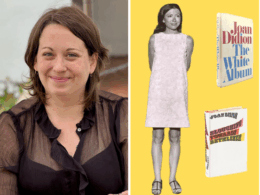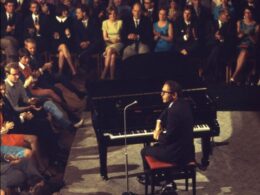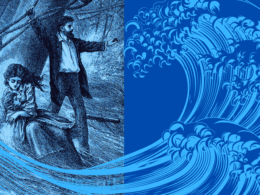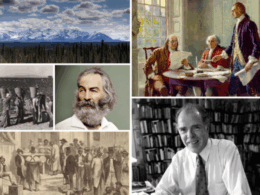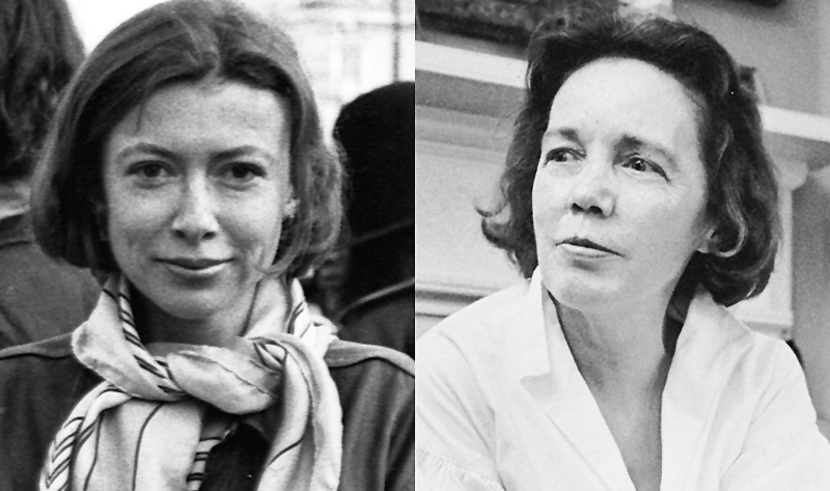
For the second time in less than two years, Library of America has issued a volume collecting several works by Joan Didion alongside a volume of the writings of Jean Stafford. This wasn’t intentional: both Stafford collections had in fact been postponed from earlier years and it just happened that the first volumes by both authors (Didion’s 1960s & 70s and Stafford’s Complete Novels) appeared in November 2019, while the second volumes (1980s & 90s and Complete Stories & Other Writings) went on sale this month. But perhaps the more interesting coincidence here is that Joan Didion’s first byline in a national publication was for an interview she did with . . . Jean Stafford.
From 1939 to 1980, Mademoiselle magazine hosted a guest editor program, allowing a total of 728 college students to spend summers at the Barbizon Hotel in New York while helping to assemble each year’s August issue. Among the guest editors who worked at the magazine over the four decades of the program were such future well-known authors as Mona Simpson, Ann Beattie, Diane Johnson, Francine du Plessix Gray, Meg Wolitzer, and (most famously, since she memorialized the experience in The Bell Jar) Sylvia Plath.
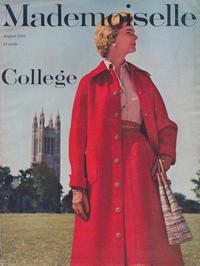
University of California, Berkeley, student Joan Didion was the guest fiction editor in 1955. A brief biography of Didion in that summer’s issue noted that she spent her free time “river-rafting and small-boating” in the Sacramento Valley and that she was “interested in little theatre, ‘almost any book published,’ and ‘publishing a book of my own.’” That year’s class of apprentices included future food writer Gael Greene (college and career editor) and novelist Janet Burroway (merchandise co-editor). One of Plath’s housemates at Smith College, future architectural historian Jane Truslow Davidson (The Fall of a Doll’s House), was guest editor-in-chief; she would marry Plath’s ex-boyfriend, the poet Peter Davison.
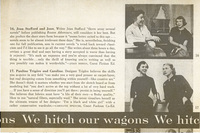
The jobs were both prestigious and mundane. “Couldn’t they just call us something else?” Burroway, who came from a “desert background” (Arizona), complained in a letter home. “So far we haven’t been treated like guests and we certainly haven’t edited.” But she admitted toward the end of her visit, “I think parts of it have been pretty glamorous.” One of the more thrilling assignments was to meet with a high-profile writer, artist, or other cultural luminary and file a report for a feature called “We Hitch Our Wagons.” Among the literary figures interviewed by that year’s twenty guest editors were Arthur Miller, S. J. Perelman, Odgen Nash, T. S. Eliot, Malcolm Cowley, and Frank O’Connor. Greene talked with Gore Vidal; Burroway with the actress Viveca Lindfors. And Joan Didion met with fellow California native Jean Stafford, who by that time had successfully published three novels.
Each of the co-editors had to distill her chat down to a summary of about 120 words. Didion reported that Stafford “threw away several novels” before writing her debut, the surprise best-seller Boston Adventure, and that she was just finishing a new book—even though she thought novels were becoming “almost irrelevant.” Stafford instead preferred to write short stories because they seemed “better suited to this age.” She also admitted to Didion that she was always anxious about the public exposure of publication and that “only the thrill of knowing you’re writing as well as you possibly can makes it worthwhile.” A photograph of Stafford and Didion by Ray Shorr appeared alongside Didion’s single-paragraph offering—her first publication in a national magazine. Her association with Mademoiselle would resume at the end of the decade, when she would occasionally freelance for the magazine while working as a feature associate at Vogue.
Stafford never did finish the novel she was working on when Didion interviewed her, although it was due at Random House that summer. She did, however, complete two notable short works, “Maggie Meriwether’s Rich Experience” and “The Warlock,” both of which appeared in The New Yorker and are included in the new Library of America collection of her complete stories.
